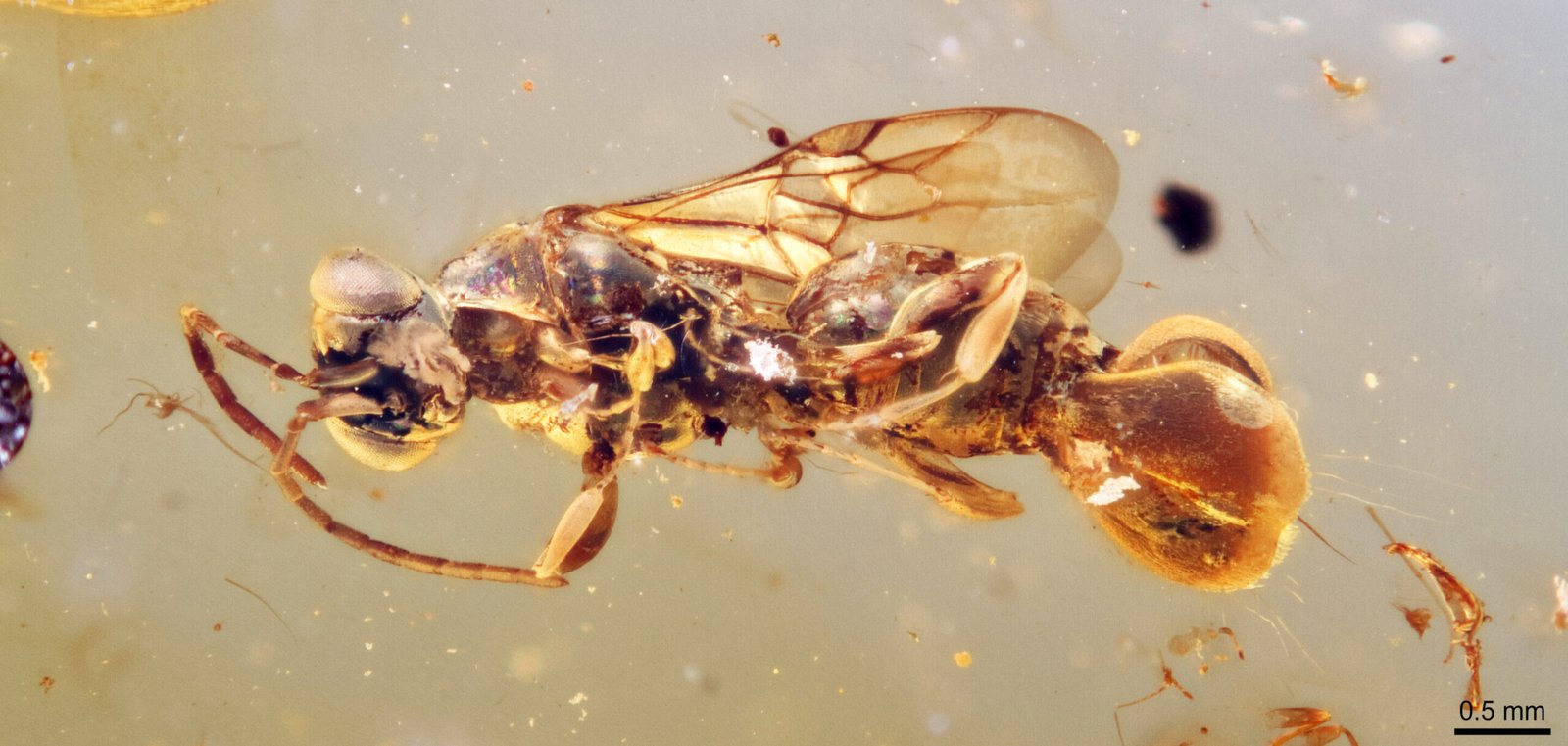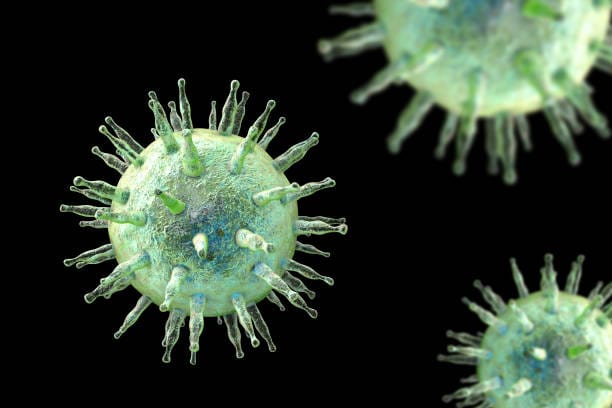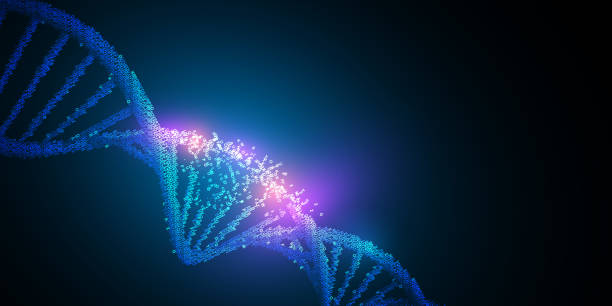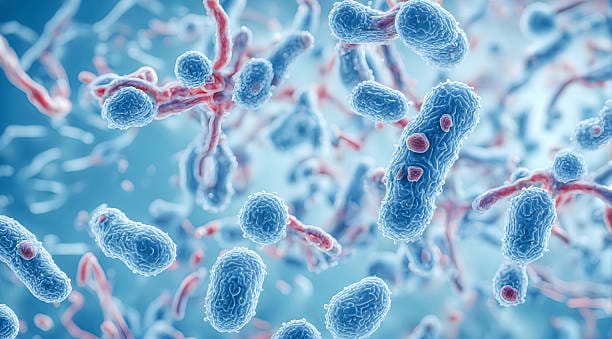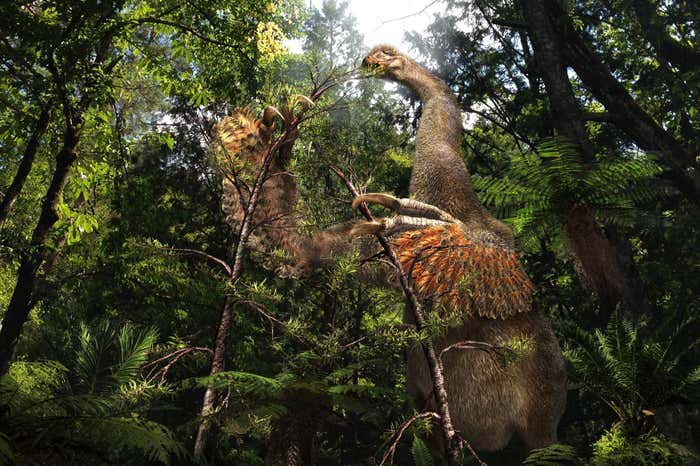Imagine a tiny predator from 99 million years ago, waiting patiently, its abdomen poised like a trap. When an unsuspecting insect comes too close—snap!—the creature clamps down, immobilizing its prey. This is not the plot of a science fiction novel, but the likely behavior of a newly discovered extinct lineage of parasitic wasps preserved in amber from the mid-Cretaceous period.
Recent research published in BMC Biology describes Sirenobethylus charybdis, a wasp with a uniquely adapted abdomen that may have functioned much like a Venus flytrap. The fossils, collected from the Kachin region in northern Myanmar, provide a fascinating glimpse into a lost world, where parasitoid wasps deployed astonishing evolutionary adaptations to hunt, capture, and reproduce. The discovery sheds light on an extinct family of wasps that may have targeted highly mobile prey in ways never before seen in modern insects.
A New Family of Ancient Wasps
The newly identified species, Sirenobethylus charybdis, gets its name from the mythical sea monster Charybdis, which swallowed and expelled water with tremendous force. Like its namesake, this wasp may have captured and held onto prey in a cyclic manner during the egg-laying process.
Researchers Taiping Gao, Lars Vilhelmsen, and their colleagues at Capital Normal University (China) and the Natural History Museum of Denmark examined 16 female specimens trapped in amber for nearly 99 million years. These wasps exhibit a combination of features distinct from any known modern species, leading scientists to propose that they belong to an entirely new family within the superfamily Chrysidoidea, dubbed Sirenobethylidae.
Unlike their present-day relatives—such as cuckoo wasps and bethylid wasps—these ancient parasitoids had a unique venation pattern in their hind wings, distinguishing them from all other known Chrysidoidea. This anatomical evidence suggests that the mid-Cretaceous period may have been a golden age for parasitoid wasps, where a variety of now-extinct lineages thrived using specialized predatory techniques.
The Venus Flytrap Abdomen: A Lethal Mechanism
One of the most striking features of Sirenobethylus charybdis is its abdominal structure, which bears a curious resemblance to a Venus flytrap plant. The researchers found that the wasp’s abdomen consisted of three flaps, with the lower one forming a paddle-like structure equipped with a dozen fine, hair-like bristles.
This specialized abdominal apparatus may have acted as a temporary restraining device, allowing the wasp to secure its host long enough to lay eggs. In modern parasitoid wasps, females use sharp ovipositors to inject their eggs into a host, but S. charybdis may have relied on this clamping mechanism to hold fast-moving prey in place before depositing its eggs.
Parasitic Strategy: A Cunning Predator
Unlike aggressive predators that actively chase down prey, Sirenobethylus charybdis likely employed a sit-and-wait strategy. Researchers speculate that these wasps may have remained stationary with their abdominal trap open, ready to snap shut when a suitable host triggered the mechanism. This adaptation would have been particularly useful for targeting highly mobile prey, such as small winged insects or jumping arthropods.
Moreover, evidence suggests that S. charybdis was a koinobiont parasitoid—meaning it allowed its host to continue growing even as it fed on it. This contrasts with idiobiont parasitoids, which immediately paralyze or kill their hosts. The ability to keep the host alive for extended periods would have ensured a steady food supply for the developing wasp larvae, a strategy still seen in some present-day parasitoids.
Implications for Evolutionary Biology
The discovery of Sirenobethylus charybdis provides a rare window into the evolutionary history of parasitoid wasps, revealing that their diversity in the Cretaceous period was likely much greater than previously thought. The preserved specimens suggest that the superfamily Chrysidoidea employed a broader range of parasitic strategies in the mid-Cretaceous than they do today.
This raises fascinating questions about why such unique adaptations disappeared. Was it due to shifts in prey availability, competition with other insect predators, or environmental changes? The extinction of S. charybdis and its relatives could have been linked to larger ecological shifts that reshaped insect populations during the late Cretaceous.
Amber: A Time Capsule for Ancient Life
The fossilized amber from Myanmar has proven to be an invaluable resource for paleontologists, preserving prehistoric life in astonishing detail. Unlike fossilized bones, which often degrade over millions of years, amber can capture even the most delicate features of insects, including fine hairs, wing veins, and microscopic structures.
Thanks to advances in Micro-CT scanning, researchers can now peer inside these ancient fossils without damaging them, reconstructing three-dimensional models of extinct species. This technology was key in analyzing S. charybdis, revealing details that would have been impossible to see using traditional microscopy alone.
Conclusion: A Glimpse into a Lost World
The discovery of Sirenobethylus charybdis is more than just a remarkable find—it challenges our understanding of insect evolution and suggests that past ecosystems harbored an even greater diversity of predatory strategies than we see today. This extinct lineage of wasps, with its Venus flytrap-like abdominal clamp, represents one of nature’s most inventive adaptations for survival.
As researchers continue to unearth ancient amber specimens, who knows what other bizarre and fascinating creatures remain to be discovered? The story of S. charybdis is a reminder that the past is still full of mysteries waiting to be unraveled, and that even the tiniest creatures can leave behind a legacy that reshapes our understanding of life on Earth.
Reference: Lars Vilhelmsen, A cretaceous fly trap? Remarkable abdominal modification in a fossil wasp, BMC Biology (2025). DOI: 10.1186/s12915-025-02190-2. www.biomedcentral.com/articles … 6/s12915-025-02190-2
